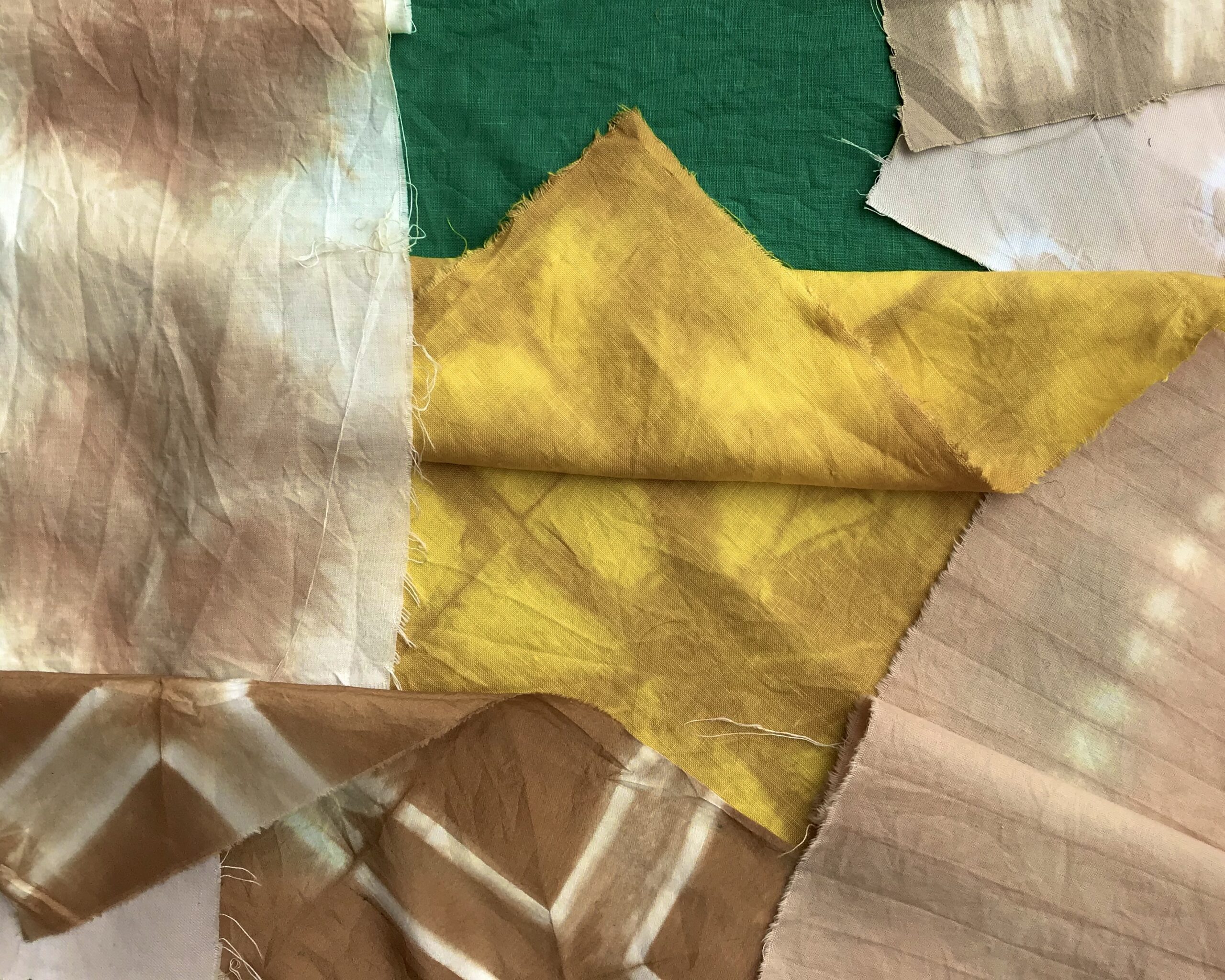Sustainable Textile Teach-In: Natural Dyes with Khadija Aziz
Free Online Workshop
Learn introductory shibori techniques and dye small batches of natural fabrics with tea bags or coffee! The new patterns on these fabrics can be used as embroidery patches to mend your clothes, or you can apply your new skills to dye scarves and tea towels. Shibori techniques that will be covered include: itajime (folding and clamping), muira (twisting and tying), nui (stitched).
Khadija Aziz is a textile artist and educator who makes glitch art using textile-making techniques and collaboration with digital technologies. In recognition of her creative practice, Khadija received the 2020 Undergraduate Award for Create Promise from the Surface Design Association and the Craft Ontario Volunteer Committee Scholarship for Undergraduates in 2019. Khadija’s artwork has been most recently exhibited in Toronto and Mississauga in Canada and Fitzroy in Australia.
All skill levels are welcome. Class size is limited, registration is required. You will receive an email with the Zoom meeting access link prior to the event.
Sustainable Teach-Ins are generously supported by the Chawkers Foundation.
WHAT YOU WILL NEED:
- 10+ tea bags (ideally black tea) or 6tbsp coffee (ground beans or instant coffee). The more tea or coffee is used, the darker the colour will be on your fabric
- Tap water
- 1-2 Small to medium pots (fabric should be able to move freely in the pots). Having two pots will allow us to dye more fabric or use two different types of tea dyes
- Stove
- Strainer
- Wooden spoon
- Drying rack
- Shibori resists: rubber bands, bulldog clips, clothespins, nylon or polyester thread with needle, or synthetic yarn, mason jar lids or wooden blocks, popsicle sticks
- Natural fabric of various sizes and shapes to play with (example: 8×6” and 8×16”). Natural dyes will not bond with synthetic fibres such as polyester or nylon so it is recommended that your fabric is made of 100% or 60%+ natural fibres such as cotton, linen, or silk. You may also use lightly coloured fabrics to enjoy a multi-coloured overdye experience! Protein fibres such as silk or wool will create the strongest colours.
Become a Member of the Textile Museum Today
And enjoy unlimited free entry to all the Textile Museum's exhibitions, plus much more.
Join Today